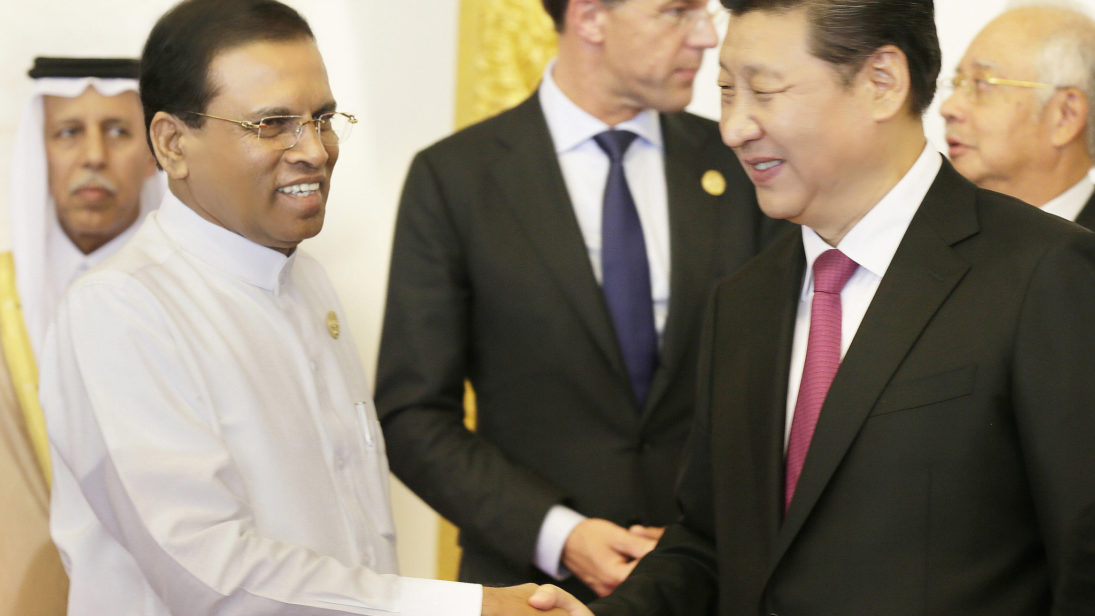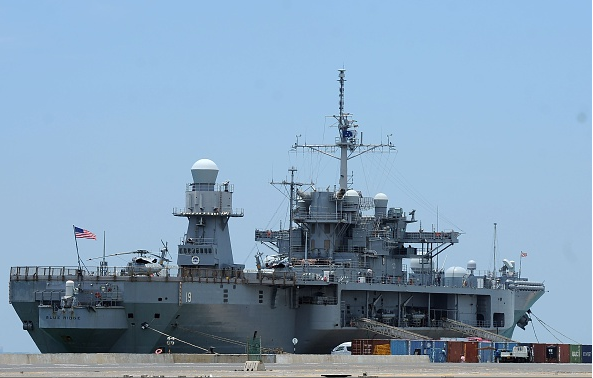
China’s Belt and Road Initiative (BRI) encapsulates the global breadth and strategic consequence of modern Chinese economic prowess. Comprised of both ocean-based and land-based projects intended to revive the ancient Silk Road trading routes, China’s expansive aspirations are set to increase connectivity, change trade-patterns, and improve commercial interactions among nation-states across Asia, Africa, and Europe. As an island nation, Sri Lanka is located at the epicenter of the BRI’s “Maritime Silk Road” in the Indian Ocean, and has been actively engaging in the commercial elements of the initiative. However, while accepting of China’s economic interests to advance its own development, Sri Lanka is actively offsetting any Chinese militaristic strategic overtures by leaning into defense cooperation with other partner nations, such as the United States and India.
Sri Lanka’s Strategic Pursuit
Given its important geostrategic position as a maritime nation situated at the crossroads of commercial trade transcending the IOR, Sri Lanka has a key role to play. It not only hosts major port cities and natural harbors, but is abundantly resource-rich in oil and gas fields as well as fisheries and seabed minerals. Sri Lanka has also recently emerged from almost three decades of war and thus, has ambitious development objectives of implementing mega-infrastructure projects in its largest cities. It is for this reason that Sri Lanka comprises an integral part of the BRI, with scope for China to invest in both the land and sea domains of the island.
[Sri Lanka] has adopted a strategy that welcomes economic investment from China while forgoing enhanced military engagement, whether it be under the banner of the BRI or as part of the broader foreign and defense relationship with China.
Yet the BRI has forced Sri Lanka to weigh the economic benefits of Chinese investment in the country against the strategic costs. Herein lies Sri Lanka’s strategic pursuit: the island nation has adopted a strategy that welcomes economic investment from China while forgoing enhanced military engagement, whether it be under the banner of the BRI or as part of the broader foreign and defense relationship with China. While many pundits have previously viewed such a strategy as a delicate “balancing act” where Sri Lanka is on the back foot, it can be argued that Sri Lanka as a sovereign nation in fact bears agency in leveraging economic opportunism while turning away undue militaristic influence from China.
Gateway to Prosperity
Overall, for small nations in the Indian Ocean and beyond, the BRI represents an economic opportunity to advance development and improve internal, cross-border, and maritime connectivity. Infrastructural investment from China into Sri Lanka has included the Mattala Rajapaksa International Airport, which incurred a USD $190 million loan, the construction of the Lotus Tower with a USD $100 million investment, a USD one billion loan to construct the first stage of the Central Expressway, and a USD $891 million loan to finance a portion of the Norochcholai Coal Power Plant project. These loans are all granted by the Chinese government via the Export-Import Bank of China. In addition, a Chinese state-owned firm is funding the USD $1.4 billion construction of the Colombo Port City—set to be one of the largest foreign investments in Sri Lanka to date. This billion dollar investment comprises marine-based development, of which the controversial Hambantota port is a part. China lent Sri Lanka USD one billion in a debt-for-equity swap, whereby the port was leased to China for 99 years when Sri Lanka couldn’t repay the loan.
While there are concerns that Sri Lanka is teetering on becoming an indebted nation to China because of the BRI, data actually shows that the country’s ballooning debt repayment obligations go beyond any one particular nation. At the end of 2018, Sri Lanka’s foreign debt amounted to an estimated USD $55 billion, which is around three–fourths of its GDP, but according to Sri Lankan government officials, only nine percent of this debt is owed to China. To be sure, its large external debt is a concerning issue for Sri Lanka but it is broader than being just a China-driven problem. Should Sri Lanka be able to manage its debt situation with China, the economic relationship can prove prosperous for the country and even potentially support broader regional development.
At “Arms” Length
Analysts argue that China’s economic and military objectives are manifested in the BRI, especially with regard to small states. Despite this being an incentive of the BRI framework, Sri Lanka’s strategic intent has been to forego bolstering military ties with China. This approach is rooted in Sri Lankan President Sirimavo Bandaranaike’s conception of the Indian Ocean as a “Zone of Peace,” which she first put forth in her speech at the 1971 Non-Aligned Movement (NAM) Summit. The strategy involves insulating the IOR from great power strategic rivalries. Despite the BRI being perhaps in part a strategic overture by China to gain militarily useful territory in the IOR, Sri Lanka has chosen to insulate itself from such power projections. Instead, it is offsetting economic investment from China by engaging with a broad range of actors in fostering defense and strategic relationships, predicated on the island being a sovereign nation.

Despite the two not having fostered a strong economic or developmental relationship, the United States has established military and defense engagements with Sri Lanka, especially recently, that outweigh China’s own engagement on this front.
A clear indication of Sri Lanka’s strategic intent in advancing its economic and military interests separately can be seen through its concrete defense relationship with the United States. Despite the two not having fostered a strong economic or developmental relationship, the United States has established military and defense engagements with Sri Lanka, especially recently, that outweigh China’s own engagement on this front. Sri Lanka and the United States have signed defense agreements including a Status-Of-Forces Agreement (SOFA) in the 1990s as well as an Acquisition and Cross-Servicing Agreement (ACSA) in 2007, which allows both nations to “facilitate the reciprocal provision of logistic support, supplies, and services.” In addition, Sri Lanka has taken part in several joint exercises with the U.S. Indo-Pacific Command including the Pacific Partnership mission in 2017, the Cooperation Afloat Readiness and Training (CARAT) exercise, and U.S.-led Rim of the Pacific exercises. The United States has also recently pledged defense-related financing to provide substantial maritime security assistance and equipment to Sri Lanka.
Sri Lanka has also chosen to strategically engage with its “Big Brother” India by participating in Indian initiatives that are intended to promote connectivity, diplomacy, and cooperation in the IOR such as the Indian Ocean Naval Symposium and the Indian Ocean Rim Association and partake in naval exchanges with its neighbor. Reciprocally, India has also aided its neighbor’s maritime infrastructure in the expansion and development process of the Trincomalee and Colombo ports.
In comparison, military engagement between China and Sri Lanka has mostly manifested in the form of ad-hoc goodwill port calls or refueling stops. China has provided disaster relief to Sri Lanka through maritime routes, provided training to Sri Lankan military personnel, and recently, built an auditorium at the Sri Lanka Military Academy. However, in terms of maritime security, Sri Lanka is far more dependent on India and the United States for equipment and training. The most striking example of this Sri Lankan strategy of keeping its economic and security interests separate was when Colombo eschewed military engagement with China by rejecting a Chinese submarine port call to its waters in 2017, believed to be a move to pacify Indian concerns after Sri Lanka allowed such a visit in 2014.
Divided Domains
Sri Lanka’s approach to the BRI in terms of economic and military strategic engagement has not been a zero-sum game. The country has benefited from the growing economic ties with China in terms of increasing connectivity and cross-border partnerships through the BRI. At the same time, Sri Lanka has chosen to adopt a strategy of compensating for economic gains made under the BRI by broadening its military engagement with the wide range of actors that traverse the IOR, to the detriment of none. The BRI has propelled Sri Lanka to proactively lay out its own strategic intent and command agency in maximizing its economic gains whist allaying China’s more bellicose power ambitions.
Editor’s note: With the second edition of the Belt and Road Forum for International Cooperation being held recently, all eyes were on whether China had learnt any lessons from implementing the project for five years and how it would adjust its plans to address member states’ concerns. But what have the smaller states in South Asia such as Sri Lanka, Nepal, and Bangladesh learnt from their experience with the Belt and Road Initiative (BRI)? How has their engagement with BRI evolved over time and where is it headed in the future? These are some of the questions that this series explores, which can be read in full here.
* * *
Image 1: Maithripala Sirisena via Flickr


